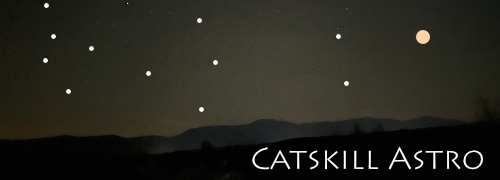In April 2025, I completed the Astronomical League’s Lunar Program (Imaging). This list provides access to that submission. It’s arranged in the order of the program, which starts with tasks and objects that can be viewed with the naked eye, works up to binoculars, and then to telescope targets.
Of course, when you’re executing the program with imaging, you’re using a telescope on all targets. That makes it easier in some ways, but harder in a profound way. With visual astronomy, for most targets you’re basically signing a log sheet that certifies, “I saw it”. Of course, you could be wrong, but they take your word for it. With imaging, you label a photo. If you’re wrong, the reviewer will know.
One of the surprises to me was the importance of sun angle. I used a mix of stacked, wavelet sharpened images captured in SharpCap, and single images captured in Seestar over a couple of years on random dates. While the SharpCap images are MUCH better, I only had a couple of them. The Seestar image, if the sun angle was right, we generally better than the SharpCap image if the angle was too far off.
Page 2 of 5
Lunar Program (Imaging) Reports 11-20 of 48 total to date.
| Thumbnail | Title/link | Target Class | Comment |
|---|---|---|---|
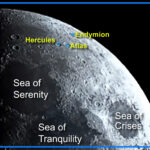 |
Three Binocular Craters (of 8) around 4 Days | Binocular Objects>Craters ~4 Days Old | Three medium-sized targets visible using binoculars, and clearly visible in my 6.8 day quarter moon |
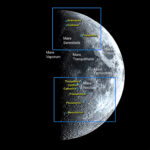 |
Nine Binocular Craters (of 14) around 7 Days | Binocular Objects>Craters ~7 Days Old | Nine medium-sized craters visible using binoculars, and clearly visible in my 6.8 day quarter moon (closeups of 3 & 6 craters) |
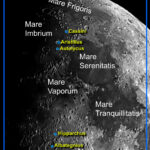 |
Five Binocular Craters (of 14) around 7 Days | Binocular Objects>Craters ~7 Days Old | Five, more westerly, medium-sized craters visible using binoculars, and clearly visible in my my 8.6 day capture. |
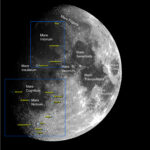 |
14 Binocular Craters around 10 Days | Binocular Objects>Craters ~10 Days Old | 14 of 14 Bino craters around 10 days, in my highest resolution capture to date. |
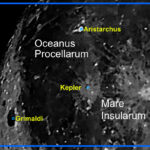 |
Three Binocular Craters around 14 Days | Binocular Objects>Craters ~14 Days Old | Three binocular craters in the NW. Grimaldi, furthest west, required a full moon image. |
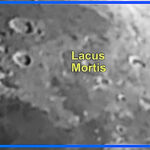 |
Lacus Mortis | Lake of Death | Telescope Objects>Research Best Time | Another great horror film name. One imagines setting it as an idyllic spot until the asteroid hits! |
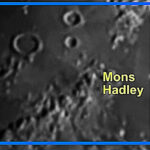 |
Mons Hadley, a Masif | Telescope Objects>Research Best Time | Mons Hadley is a massif at the northern terminus of the Montes Apenninus, and close to the Apollo 15 landing site. |
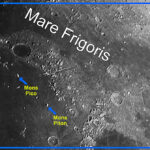 |
Mons Pico and Piton, Two Isolated Mountains | Telescope Objects>Research Best Time | Pico and Piton rise directly from Mare Imbrium, 2,450m and 2,300m elevation, respectively |
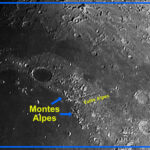 |
Alpes, Montes and Vallis | Telescope Objects>Research Best Time | The lunar Alps, neatly bisected by the Valley |
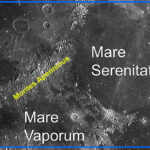 |
Montes Apenninus | Telescope Objects>Research Best Time | The most impressive mountains on the moon, even more than the Alpes |
